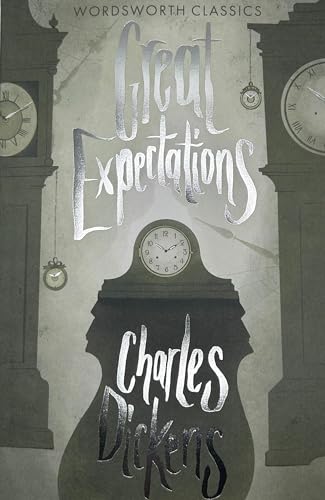Welcome to my review of Great Expectations! This one by Charles Dickens is a wild ride through twists, turns, and social class commentary. I got so engrossed in Pip’s story, I forgot my own great expectations… like doing the dishes. But don’t worry, I’m here to spill the beans on everything from character development to narrative style, so hang tight!
Steve’s Great Expectations Review
In a Nutshell
Great Expectations is a novel by Charles Dickens. It falls under the genre of literary fiction and is packed with thrilling twists and deep themes. The story follows a young orphan named Pip as he navigates life’s ups and downs, trying to carve out his destiny. The book touches on themes like social class, ambition, and self-discovery. It’s a rich mix of memorable characters, drama, and a sprinkling of humor.
Character Development in Great Expectations
Charles Dickens’ Great Expectations is a masterclass in character development. From the first page, we meet Pip, a young orphan with dreams bigger than his britches. I remember reading the book and thinking, “Pip, you can’t even tie your own shoes yet!” But, boy, does he grow. Dickens takes us on a journey from Pip’s humble beginnings as a blacksmith’s apprentice to his misguided stint as a London gentleman. We see every misstep and triumph along the way.
Now, let’s talk about Miss Havisham. She’s like your crazy aunt who collects cats and creepy dolls. She’s stuck in her wedding dress, plotting revenge on men while clockin’ up some serious cobwebs. Her development is more like a stuck record, but it’s fascinating to watch. Estella, raised by Miss Havisham to break hearts, shows us that nurture can sometimes be a twisted teacher. She’s cold, aloof, but you can’t help but feel for her.
Joe Gargery, the blacksmith, is the salt of the earth. Steady, kind, and always there for Pip, even when Pip is too busy being a snob. Joe’s character development is less dramatic but equally important. He’s the human rock in this sea of change. Even minor characters like Herbert Pocket and Biddy bring richness to the story. Each character we meet in Great Expectations feels real and complex, like folks you might meet at a family reunion, provided your family is wildly eccentric.
Ready for the rollercoaster of plot twists? Hold on to your hats!
Mind-blowing Plot Twists in Great Expectations
Ah, plot twists! They keep us on the edge of our seats, biting our nails like it’s an Olympic sport. In Great Expectations, Charles Dickens serves us more plot twists than a gymnastics routine. Just when you think you’ve got things figured out, BAM! Dickens throws a curveball that leaves you reeling.
Take Pip’s mysterious benefactor, for example. Pip spends a good chunk of the story believing it’s Miss Havisham, the jilted bride with a heart colder than a polar bear’s toenails. She’s got money and a vendetta, so it makes sense, right? WRONG! Turns out, it’s Magwitch, the convict Pip helped as a kid. The moment when Pip learns this is like getting hit with a sack of bricks, but in a good way.
And then there’s Estella, the ice queen Pip loves. At first, she’s just Miss Havisham’s beautiful, heartbreaker protégé. But wait, there’s more! She is revealed to be the daughter of Magwitch and Molly, Jaggers’ housekeeper. It’s like Dickens watched an episode of Maury and decided to crank up the drama. These twists are not just for shock value; they add depth and complexity to the story, making you rethink what you thought you knew.
As these bombshells drop, you can almost hear Dickens chuckling in the background. Each twist pushes Pip—and us—further into the tangled web of Victorian society.
Next time, we’ll chat about how Dickens used Great Expectations to comment on the social class system. Trust me, it’s like a roast but with more corsets and fewer marshmallows.
Social Class Commentary in Great Expectations
Charles Dickens nailed social class commentary with Great Expectations. I remember reading it and feeling like I was at a fancy dinner party, only to realize I was underdressed. Dickens paints Pip’s journey from a humble boy to a gentleman, and you see him grapple with the class differences like a cat battling a laser pointer. Pip’s desire to rise in social class gets him tangled in all kinds of messes, proving money can’t buy happiness—or wisdom.
The whole novel is like a game of snakes and ladders. One minute Pip’s climbing up, thinking he’s about to win big, next he’s sliding down a snake because he trusted the wrong person. Pip’s affection for Estella, a lady groomed to break hearts, is a great example. He thinks being rich will win her love. Oh Pip, if only you knew. The more he chases the high life, the more he realizes it’s just an illusion. Dickens shows us how social class can make people act like they’re in a never-ending talent show, always performing, never being real.
Joe Gargery, Pip’s brother-in-law, is one of my favorite characters. He’s simple, honest, and happier than the rich folks. Joe’s a reminder that decency and kindness matter more than wealth and status. On the flip side, characters like Miss Havisham, who uses her riches to manipulate others, highlight how money can corrupt.
Reading Great Expectations made me question the importance society places on social class. It’s like Dickens handed us all a magnifying glass and said, “Take a better look!”
Next, let’s chat about the narrative style, which is like the icing on this literary cake… stay tuned!
Narrative Style in Great Expectations
Hey folks, it’s Steve here! Today, I’m talking about the narrative style in Great Expectations by Charles Dickens. First off, let me tell you, this guy knew how to spin a yarn. You get Pip’s first-person perspective throughout the book, so you’re in his head, walking in his shoes, feeling his feelings—like a juicy virtual reality, but with more top hats and less Wi-Fi.
One thing Dickens does really well is the descriptive writing. I mean, this dude could describe a cheese sandwich and make it sound like the Mona Lisa. His settings and characters leap off the page. Remember the marshes? I swear you can almost smell the damp mud. And Joe’s forge is practically glowing from the pages.
Now, I gotta mention the humor. Dickens sprinkles in so many witty lines, it’s like he’s got a seasoning shaker full of jokes. He balances this with some heavy themes, making the book a delightful roller coaster of emotions.
However, Dickens sometimes gets a bit carried away with his descriptions. I found myself thinking, “C’mon Charles, we get it, the room is full of cobwebs!” And the pacing can be a tad slow, especially if you’re used to the fast pace of today’s thrillers.
Despite these gripes, I’d totally recommend Great Expectations. The narrative style, while occasionally verbose, is rich and engaging. It’s like taking a time machine to Victorian England. So, grab a cup of tea and settle in for a good read!
Conclusion
Well folks, that’s a wrap on my review of Great Expectations. Dickens gives us a wild ride with unforgettable characters like Pip and Miss Havisham, jaw-dropping plot twists, and a smart look at social class. Sure, it gets a bit wordy sometimes, but it’s worth the trip. So grab a cozy spot and dive in. It’s a classic for a reason!


